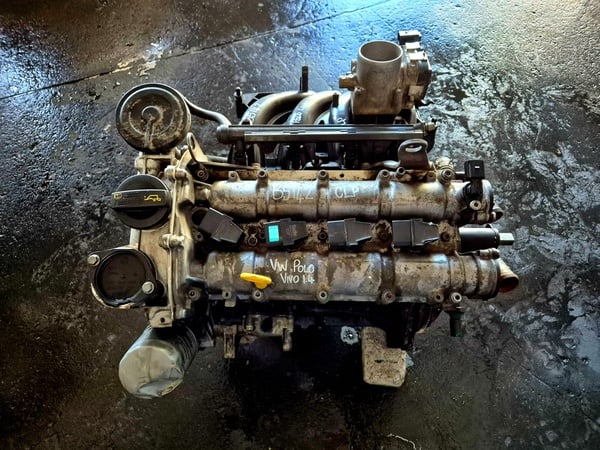Find a cost-effective clp engine for industrial applications.
Find a cost-effective clp engine for industrial applications.
Blog Article
Just How a Clp Engine Can Boost Effectiveness in Different Industries
The development of CLP engines marks a considerable change in operational performance throughout various industries, driven by their capacity to maximize fuel usage and reduce downtime. As companies significantly focus on sustainability alongside efficiency, the duty of CLP engines ends up being even much more critical.
Summary of CLP Engines
CLP engines, or Constant Liquid Propellant engines, represent a substantial innovation in propulsion modern technology, especially for room applications. These engines utilize a constant feed system that enables the continual expulsion of propellant, causing boosted efficiency and performance contrasted to traditional strong or hybrid propulsion systems. By keeping a continuous circulation of liquid propellant, CLP engines can accomplish much more specific drive control, which is important for steering spacecraft in different objective circumstances.
The layout of CLP engines integrates advanced products and ingenious gas administration systems. clp engine. This causes decreased weight and raised integrity, essential elements for long-duration area objectives. In addition, the constant procedure decreases the risk of burning instability, a typical obstacle in traditional rocket engines.

Benefits in Production
The manufacturing of Constant Fluid Propellant (CLP) engines offers a number of noteworthy advantages that improve both performance and cost-effectiveness. Among the key advantages is the structured production process, which lowers the complexity associated with conventional propulsion systems. By making use of fluid propellant, manufacturers can attain higher accuracy in engine efficiency, resulting in maximized energy outcome and decreased waste.
In addition, CLP engines facilitate a greater degree of modularity, permitting much easier integration into various manufacturing lines. This flexibility can considerably decrease lead times and enhance total functional versatility. The use of CLP innovation also tends to reduce the need for extensive maintenance as a result of less moving components, which converts into lowered downtime and operational prices.

Applications in Logistics
Leveraging Constant Fluid Propellant (CLP) engines in logistics provides substantial advantages in operational effectiveness and dependability. These engines provide a robust service for different transportation needs, enabling the smooth movement of items across large ranges. The fundamental design of CLP engines enables regular power output, which equates right into smoother and extra predictable transport schedules.
Among the key applications of CLP engines in logistics is in heavy-duty freight transport, where they can drive both ground and aerial cars. Their ability to preserve high performance under differing load problems makes sure that distribution timelines are satisfied, thus improving consumer satisfaction. Furthermore, CLP engines can be incorporated into automated read logistics systems, promoting real-time tracking and optimizing course planning.
Furthermore, the sturdiness of CLP engines lowers upkeep downtime, permitting logistics firms to optimize their operational abilities. This is especially helpful in warehousing procedures, where efficiency in dealing with and delivering products is crucial. As logistics remains to progress, the assimilation of CLP engines stands for a forward-thinking method that not only improves performance however additionally supports the market's growing needs for integrity and speed.
Effect On Energy Effectiveness
Just How do Continual Liquid Propellant (CLP) engines improve energy effectiveness in transportation? CLP engines use a constant circulation of liquid gas, enhancing burning processes and preserving a stable drive outcome. This style reduces power losses connected with typical burning engines, where gas shipment can differ and cause inefficiencies.
The constant procedure of CLP engines permits for an extra reliable thermal cycle, resulting in greater details impulse compared to standard engines. clp engine. This equates to decreased gas usage for the very same quantity of job done, significantly reducing functional prices throughout different transport sectors, consisting of air travel and maritime markets
In addition, the capability of CLP engines to keep optimal efficiency under differing load problems reduces the need for constant acceleration and slowdown, further improving fuel effectiveness. Improved energy efficiency not only adds to set you back savings but also brings about decrease greenhouse gas exhausts, aligning with global sustainability objectives.
Future Trends and Innovations
Arising advancements in Constant Fluid Propellant (CLP) engine innovation guarantee to revolutionize the landscape of transport effectiveness and sustainability. As sectors pivot toward greener options, CLP engines stand at the center, incorporating innovative materials and layout methods that enhance efficiency while decreasing environmental impact.
Among the most promising fads is the fostering of crossbreed systems that integrate CLP engines with renewable energy resources. This synergy can enhance official site gas intake and lower emissions, straightening with worldwide sustainability goals. Developments in computational liquid dynamics (CFD) are promoting the style of more aerodynamically reliable engines, leading to decreased drag and improved gas performance.
Furthermore, the advancement of clever tracking systems is readied to improve operational effectiveness. These systems take advantage of this website information analytics and IoT modern technology to enhance engine efficiency in real-time, ensuring that the engines operate within their most efficient specifications.
As research study continues to explore different propellant formulations-- such as biofuels and artificial gas-- the future of CLP engines looks promising. By taking advantage of these technologies, industries can not only improve their performance yet also add considerably to a cleaner, a lot more lasting future in transport.
Conclusion
In verdict, CLP engines stand for a considerable development in efficiency throughout numerous sectors. The assimilation of innovative products and less moving parts decreases maintenance requirements, while positioning with sustainability goals settings CLP engines as a pivotal technology for the future.
Report this page